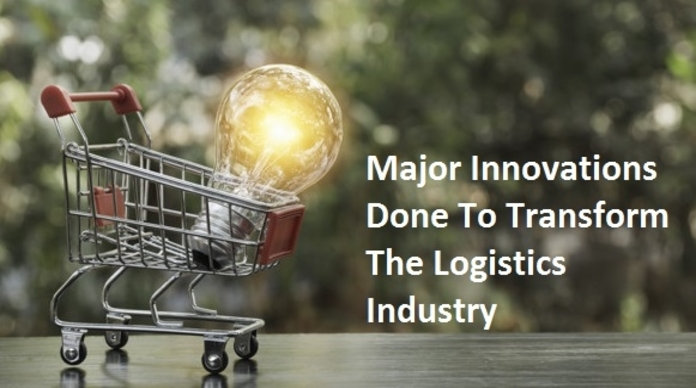Background information for the session „Managing Global Supply Chains” on November 8, 2022,
The call for transparency along worldwide supply chains is getting louder!
Following the most recent disruptions to global supply chains as a result of corona, the Ever Given accident in the Suez Canal, and the cascading effects of supply chain problems caused by the war in Ukraine, the key actors along the global value chains meanwhile understand that the transparency and visibility of supply chains is a central criterion for the quality of these chains. While just a couple of years ago it was safe to assume that goods could arrive in our markets on time from virtually anywhere in the world, we have since seen the supply situation deteriorate significantly. Dramatic delays in deliveries from the Far East have become the norm, and there is little indication that we will see any recovery of worldwide supply chains in the near future.
There are now also supply bottlenecks for raw materials, energy, and intermediate products. Expansion of production capacities will not be possible in the short term, and the transport capacity of the maritime shipping companies is also exhausted due to the tailbacks in front of key ports. The same applies to the supply chains extending from the ports into the hinterland, where capacity is restricted by a shortage of truck drivers. There has been an almost imperceptible shift from the question of the most cost-efficient mode of transport to the question of how retailers or producers can continue to deliver goods to their customers.
This supply capability is sometimes even more important than the price of the goods themselves. Supply capability depends on product availability, which in turn depends on transport capacity in the logistics chain and information on when a shipment will have arrived at its destination. The keyword in all of this is “transparency” – across the entire supply chain.
What are the benefits of transparent supply chains?
Transparency is not only important against the backdrop of supply chain disruptions. Customers also expect transparent supply chains, and both ecological and social expectations are increasing at the same time. Products should be made without burdening the environment and without questionable working conditions. The German Act on Corporate Due Diligence Obligations in Supply Chains will in the future require companies to document violations and take steps to counteract future violations.
To do this, a trading company must be aware of the upstream suppliers of its suppliers as well as their geographic distribution. Transparency across the supply chains, exact information about the means of production or transport vehicles, and knowledge of transport routes, production systems, and the like are also important for the mapping of net CO2 footprints. These are all areas in which transparent logistics systems set themselves apart from opaque systems. On the road to greater transparency, new technologies increase the requirement for logistics to ensure more transparency but also make it easier to meet this requirement. The basis for transparency is generally the harmonization of process-spanning and cross-company interfaces to optimize tracking and tracing.
Sometimes this is achieved in-house by a logistics service provider, a retailer, or a manufacturing company or, as is often the case, with the support of a service provider specializing in solutions of this kind. Studies also clearly show that there is major potential for tracking and tracing in the transport sector.1 The key to this kind of transparency is uniform master data, generally collected from widely differing data sources with the help of technology (and, ideally, automated). It is safe to assume, however, that the lion’s share of company data that is used today is not uniformly formatted and can therefore not be directly utilized for analytical purposes.
A generic overview of the use of technology in logistics
The “Trends and Strategies” study series from Bundesvereinigung Logistik (BVL) e.V. provides an overview of the technologies that are already being used to manage both information flows and material flows in the logistics sector. The study shows that information technology in particular is becoming increasingly important in the context of supply chain transparency.
ERP systems (Enterprise Resource Planning systems) that permit statistical analysis of large data volumes, warehouse management systems for the management of physical stock inventories, and transport management systems are widely used.2 Utilisation of external IT service platforms (“platform as a service”) is still only sporadic, but the availability of these platforms is increasing and they will be ever more important in years to come. If equipped with the relevant algorithms, these systems not only permit the collection of data; the use of advanced data analysis processes also paves the way for the identification of regular patterns in operating routines and – with the caveat of non-plannable events – allows forecasts for the throughout times of transport processes (inter-company transport) or warehousing processes (in-house logistics).
In this context, ever more powerful analysis techniques promote a better understanding (transparency) of even highly complex interrelationships in supply chains and facilitate more effective management of these chains. The field of advanced analysis methods alone is extremely diverse, comprising not just the logistics software outlined above but also areas like image processing (for tasks such as automated load measurement), machine learning (for pattern recognition and derivation of predictions, for example) or automatic text and speech processing (to facilitate documentation and communication).
The potential applications are by no means limited to logistics tasks. Material flows in the warehouses of industry, trade, and logistics are a further major field for the use of technology, and various support technologies, automation solutions, and robotics concepts play a key role in this respect. Against the backdrop of the skill shortage, the focus is above all on error-free handling of ever-greater material flows with the help of data recording devices such as barcode scanners or smartphones, which are relatively inexpensive and ensure a rapid return on investment. Fully autonomous technologies can process work orders independently and without human involvement, but they require particularly high investment while providing far lower flexibility.
They are therefore not especially widespread for cost reasons and are mainly encountered in the area of in-house logistics. Depending on the use case, comparatively short ROI times of just a few years are now also conceivable for fully automated systems. Collaborative work processes based on the interplay of human pickers and picking robots are also already in use in numerous warehouses.3 There is major potential for the collaborative use of data along the transport chain, and mobile access to company data is meanwhile a common practice. Automated communication between machines by intelligent interlinked objects is far less widespread. Digital marketplaces are far more popular and are also playing an ever greater role in the provision of logistics services. This is an area in which many new business models and companies are emerging, driven by venture capital.
Can data drive “new logistics”?
The spread of cost-efficient technologies that use sensors and are able to document and forward data (so-called intelligent devices or smart objects) means that a data-focused business vision can in the future become reality. Cisco projections predict that there will already be up to 29 billion interconnected objects worldwide by the year 2023.4 The highest growth is predicted for machine-to-machine communication rather than, for example, smartphones or other consumer electronics. This lays the foundation for more data-focused processes in all areas of the economy (and in society).
The causal chain is simply explained: if data-generating devices become more widespread and data infrastructure is in place, then it is logical that more data are produced that can also be utilized profitably. Examples of emerging technology infrastructures include telematic modules in new utility vehicles or WLAN infrastructure in industrial/logistics properties; not to mention private or work smartphones with numerous sensors that can be controlled via apps and that, for example, form the basis for digitalization of delivery notes – a goal being pursued in the framework of the “cloud4log” project in Germany.
Who leads the field? –
On the role of start-ups and other pioneers in the sector Innovative projects geared towards objectives such as the digitalization of delivery notes are also and in particular the mission of start-ups, and start-ups with a strong focus on the provision of logistics services have become far more common since the middle of the last decade and have now gained a foothold in the logistics market. Start-ups are mostly involved in the highly focused development of a single product and are very small; their pace of development is generally far more rapid than that of established companies.
Moreover, the availability of venture capital means that some start-ups experience a tempo of development that can even be described as dramatic. A number of high-valuation companies have meanwhile emerged in the logistics sector and have succeeded in attracting noticeable investment volumes. According to a study conducted by McKinsey, the total investment in logistics start-ups doubled from 2020 to 2021 from 12.6 to 24.6 billion USD.6 Start-ups that offer transparency solutions recorded the highest rates of increased investment.7 While 10 years ago it was inconceivable that details of an ETA (estimated time of arrival) for incoming shipments might be monetized via a business model, this is now the basis of multiple business models in the start-up sector.
ETAs are naturally upgraded by the addition of analyses, dashboards, etc. The initiatives and projects of established companies in the logistics sector are at least as important as the activities of start-ups. Xpress Ventures as a company builder for Fiege, the Rhenus “Rhevo Inkubator”, the DHL Start-up-Lab, Schenker Ventures or Kubicx (a subsidiary of Schmitz Cargobull) or BEAM (a subsidiary of intralogistics player Beumer) are just some examples of initiatives set up by established logistics companies to identify innovations, start-ups or new applications.8 Companies without a designated and externally visible innovation unit are also relevant in this respect but are less easy to identify if they do not offer solutions externally.
Despite these examples, only around 8% of all established logistics service providers have an innovation unit of this kind.9 But logistics service providers in particular – who, unlike manufacturing companies, for example, do not have R&D budgets in the classic sense – have increased their budgets for the development of innovations in recent years. More than one in two of the surveyed companies have increased their budgets, and roughly one in four have done so significantly (>10% over 3 years).
The role of crisis as a driver of innovation
The persisting crises have greatly accelerated digitalization and the use of technology along global supply chains. The technology required to ensure transparency is available, and companies are making increasing use of this technology, hence promoting its spread. New concepts, business models, and technology deployment scenarios are being trialled faster than was the case just a few years ago. The pressing problem of the skill shortage in logistics is further increasing the pressure on companies to find innovative solutions.
It is generally also agreed that companies who exchange their data will likely be more successful.11 Nevertheless, the lack of willingness to exchange data is an issue that has not yet been entirely resolved. Moreover, the era of cloud applications brings with it the risk of cyber-attacks, against which the worldwide supply chains need to be adequately protected to ensure that they are also resilient to these types of threats.
BVL and Messe München have published a white paper entitled “The Role of Innovation in Logistics – Meeting Upcoming Challenges with Technology and Data.”








